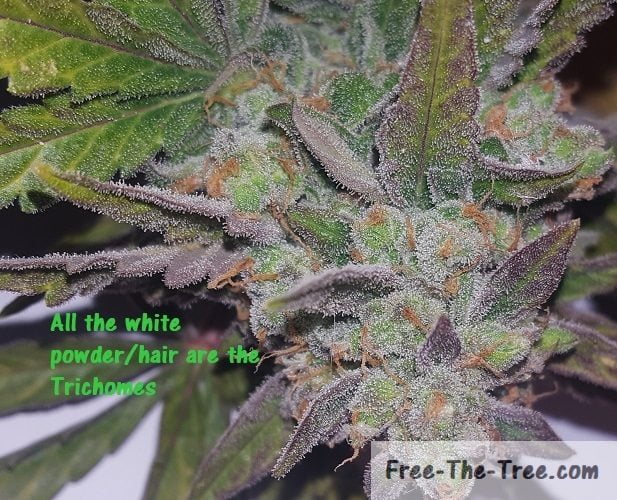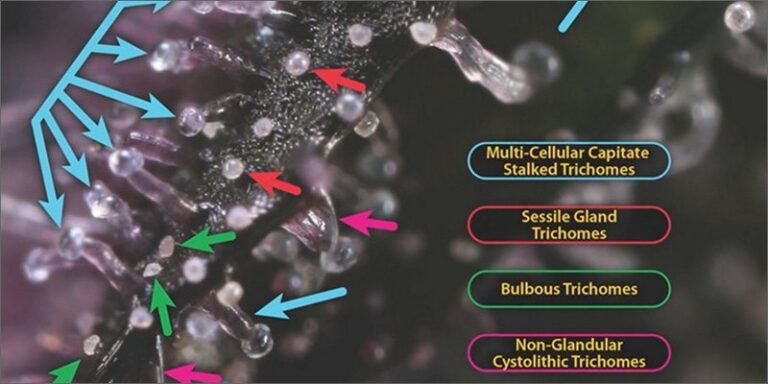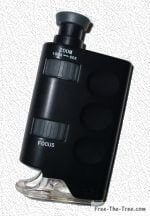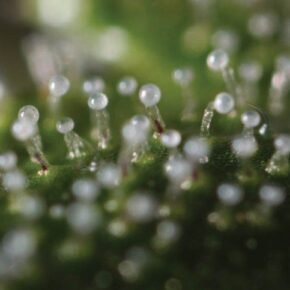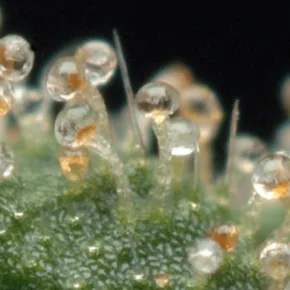What are Trichomes?
The term “Trichome” defines an outgrowth or appendages on plants, algae, lichens or protists.
On cannabis they look like tiny crystals or white powder that cover the buds and leaves near them. Once you look closer, you’ll notice that it’s actually thousands of small little bulbs
This is where the most of the terpenes, giving the smell and flavor, and the cannabinoïd’s are producted. Among these, we can find, our friends, TetraHydroCannabinol (THC) and Cannabidiol (CBD).
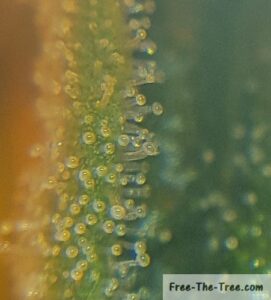
Trichome – Botanical Definition
The Wikipedia definition of Trichomes is the following:
Trichomes (/ˈtraɪkoʊmz/ or /ˈtrɪkoʊmz/), from the Greek τρίχωμα (trichōma) meaning “hair”, are fine outgrowths or appendages on plants, algae, lichens, and certain protists. They are of diverse structure and function. Examples are hairs, glandular hairs, scales, and papillae. A covering of any kind of hair on a plant is an indumentum, and the surface bearing them is said to be pubescent.


